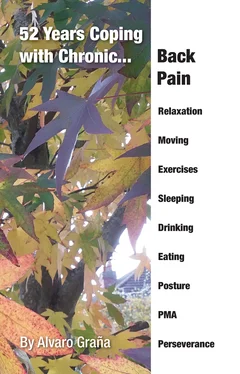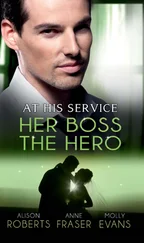If you are using any of the above drugs it is important to report all the side effects, both physical and emotional to your doctor.
Personal experience - My symptoms the year after I stopped working and before I retired on medical grounds were: chronic arthritic type pains to the joints of my spine and legs which affected the nerves, causing inflammation. This inflammation caused various degrees of pain which sometimes affected one, two or more areas of my body (lower back, upper back, neck, right hip joint and knees mainly). The pain occasionally affected my whole body when the inflammation was generalised, which means I was experiencing constant pain of various degrees of intensity.
I sometimes felt dizzy due to severe inflammation and had to lie down in the dark room for hours, and in some instances days at a time. I was prescribed migrain tablets, but they didn’t work. Occasionally when the pain was located in a particular area of my spine, it was so intense it caused nausea and vomiting (although it is not clear whether the nausea was caused by the medication or by migrains). I also had occasional pains to my liver, middle back, leg, neck, eyes and head which also induced dizziness and nausea, some times causing vomiting, which I later found out through my chiropractor were migrain symptoms and related to my lower back injury. Sometimes the pains went from the back of my head down my spine, down along my right leg all the way to my heel. It felt like an electric shock travelling from one point to the other.
Later, around 2002, I also had arthritic type pains which started with my hands then progressed to my knees and then to my ankles. My doctor said it was degeneration of the joints (wear and tear) partly to do with my age and partly to do with my injury and the operation. I went for a second opinion and was told it was arthritis. I didn’t do much for a whole year when I stopped working and was beginning to get depressed and fed up. Then I don’t know what the trigger was, but I decided I was going to do something, I wanted to be active. After some searching, Ingrid my wife who was working full time, I decided to run a business from home (2001). It meant a lot of physical work but I did it. Ingrid supported me from the start helping whenever she had time, though the lion’s share fell to me. It was very tough, and I suffered quite a lot of physical setbacks and pain but I realised the pains that I experienced when I was active were about the same as the ones I had when I had been inactive. At least I had an interest, I was active and devised coping strategies and learnt to pace myself. The activity gave me something constructive to focus on, distracting me from my pain, and I was once again a functioning individual, which boosted my morale.
There are two Types of Sufferers
One type is the person who avoids activity and the second type is the person who copes and keeps active.
The avoider: – gets frightened by the pain and worries a lot about the future.
– is afraid that pain always means further damage, which is not necessarily the case.
– rests a lot and waits, hoping that the pain will diminish or possibly disappear altogether.
The coper: – knows that the pain will ease and does not fear the future
– carries on as normally as possible.
– deals with the pain by being positive and staying active.
The coper manages by practising PAIN MANAGEMENT.
PAIN MANAGEMENT
Pain Management is learning ways to cope with pain by finding out (knowledge) as much as possible about the origins, causes, treatments; discovering things to avoid, positive attitude, etc, that might help him/ her to be in control and manage their pain.
Knowledge leads to understanding which consequently leads to Effective Management. Pain management is recommended to sufferers of chronic, persistent pain.
In the last 20 years hospitals all over Britain have set up ‘Pain Clinics’ staffed by specialists who deal with people with many different problems who all have one thing in common – persistent or chronic pain. Their main aim is to help people to manage or cope better by understandig more about their pain.
Dr.Tom Smith, in his book “Overcoming Back Pain” (2003), makes a comment about Pain Clinics, ”Many of the people attending Pain Clinics have chronic low back pain, - a measure of how ineffective we GPs and orthopaedic surgeons are in treating them. So where are we going wrong?”
EDUCATION plays a very important role in pain management. By practitioners giving a full explanation of the physical and psychological factors which contribute to an individual’s pain. From education comes knowledge which leads to understanding; knowledge and understanding empowers the individual to practice pain management
Knowledge + Understanding = MANAGEMENT
Dr. Smith makes reference to cognitive therapy and psychophysiology, two approaches which Pain Clinics around the country use alongside other treatments.
Cognitive Therapy
Cognitive means understanding, so cognitive therapy is learning about pain and how the sufferer can best cope with it. The therapist discusses issues related to pain, fears and beliefs about pain, different treatments, mental attitudes to pain, perceptions of chronic pain, expectations on treatments, confidence, etc. As a result of this learning experience patients can develop their own expertise in dealing with their own pain getting stronger mentally as a result. The patient learns how to avoid dwelling on their pain and realises that stress makes pain worse.
Psychophysiology
Psycho means mind, and physio means body, so it is about how the mind and everything that happens in there affects the body. Our moods, thoughts and feelings have the power to alter physiological reactions in the body. So psychophysiology aims at changing the interaction between the mind and the body, sometimes by simply focussing on something else distracts the pain. The five main tools to be in control of pain are:
1.– Control of breathing
2.– Relaxation
3.– Self-hypnosis
4.– Biofeedback
5.– Meditation
For all these different approaches, please go to section ‘The Way Forward – Treatments and Recommendations’ (page 28).
These techniques should not be taken lightly. Please be aware that not all will suit everyone, although there should be something for everyone in this ‘menu’.
Dr. Smith says, “When we are in pain, we breathe faster and less deeply: if this continues, we pitch into a panic reaction. Understanding how to control and slow down our breathing is critical: by doing so, we slow down all our heightened bodily activities, and our pain perception is lessened.” This is something anybody can learn and do. Most Pain Clinics and elementary yoga classes teach breathing techniques as well as meditation.
All techniques are explained in most Pain Clinics, and you will be made aware that they require focus, dedication and time; perseverance will pay off, they are not a quick fix. Ensure to always seek professional advice.
Personal experience - After I became more active in the third phase I started to work out what I could do without aggravating my condition and also the things I needed to avoid doing. The most important goal I set myself was to try and live life as normally as possible and focus on the things I could do rather than the things I couldn’t do. I also learnt to stop and take time to rest and recover for the next stint. By trial and error I learnt about the things and activities that I should avoid. It was all about awareness and management.
THINGS THAT YOU CAN DO FOR YOURSELF
There are various actions you can take to help yourself.
You can:
Читать дальше












